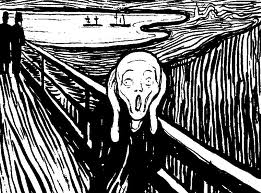There are two possible scenarios for dealing with performance anxiety, otherwise known as stage
fright. One scenario is that we allow the audience to draw us out to them. We do this by buying in to what might be on their minds, by focusing on them. What do they think of me? Do they like me? Do I seem foolish and incompetent? This line of negative thinking also includes the feeling of not being good enough, which is another way seeing ourselves from the audience's point of view—a point of view that is spurious at best. The audience has come to enjoy a concert and are not looking for failure. and begin to bow, our minds should already be forming the topic sentence, so to speak. What is the first idea we intend to present and what does it feel like physically to play those notes.
This is for some performers easier said than done. It requires calm at a time when the body is gearing up for a fight or flight response. So, in preparation for walking out on stage in a state of calm focus, practice conscious breathing back stage. This is a focusing on the breath, slowly inhaling and exhaling. This can slow the pulse and increase the chances of finding the right tempo at the start.
Butterflies are normal. Every performer has them. But I put this in the category of excitement at the opportunity to share something important with others who are eager to hear what I have to say. We want to be excited but not fearful. We can achieve this by focusing on the message and the means of delivery and not on the messenger or the listener.





















